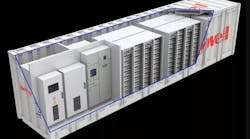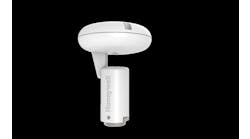Just as there “ain’t no romance without finance,” alternative energy sources such as solar and wind must have some way to store power for on-demand grids and consumers to use as needed.
“Our customers are looking for partners that can help with their sustainability goals, whether they want to adopt and maximize green energy usage, achieve greater efficiency, or be more selective in seeking renewable energy sources that may also be more intermittent,” says Prudence Hoffman, global director for energy storage solutions at Honeywell. “All of these options require energy storage and flexible controls to operate and maintain them.”
Beyond their sustainability efforts, Hoffman reports that users also want to avoid costly peak energy use periods, and be prepared for potential brownouts and blackouts, which have increased in Texas and California. “Many users are employing generators, but combining them with battery systems can be more efficient, and even earn revenue,” explains Hoffman. “For example, Ontario’s grid has adjustable tariffs for users that limit their consumption, and this can reduce their bills. However, as much as users want to avoid peaks, they also don’t want to shut down their processes, and a battery system can help them shave those peaks.”
Hoffman adds that Honeywell has supplied stationary energy storage, controls and AI-enabled peak prediction software to Aypa Power LLC in Toronto, Ontario. Honeywell manages the controls for batteries in Ontario from its remote operations center in Calgary, Alberta. Likewise, Honeywell also deployed multiple battery containers at Hecate Energy’s solar facility in New Mexico to help it shift power collected during the day to meet increased demand at night.
Similarly, to alleviate the effects of local power outages, Honeywell Life Safety SRL in Lugoj, Romania, deployed an onsite microgrid that integrates a photovoltaic and battery energy storage system (PV+BESS) managed by Honeywell’s controls. The microgrid consists of 1.7 megawatts (MV) of rooftop and carport PV solar cells, 1.6 MWh of BESS in a 20-foot-long unit, diesel generators, integration with building management, and onsite energy management with Honeywell’s Experion Energy Control System and Forge Sustainability+ Power Manager software.
“This microgrid lets the Lugoj facility operate more reliably, while also reducing its daily electricity consumption and contribute to Honeywell’s corporate sustainability targets and net-zero carbon commitments,” says Hoffman. “It provides a complete power backup during blackouts, and is estimated to reduce imports costs from the local grid by 30% per year, and reduces the plant’s carbon footprint.
“Once the batteries and other equipment installed and operating, the solution enables autonomous charging and discharging of the BESS unit. This allows users to reduce use of their diesel generators to a minimum.”
For other users, facilities and organizations that want to achieve similar sustainability gains, Hoffman suggests they begin by investigating and establishing some primary goals for their processes and locations, perform detailed feasibility studies to determine what sustainability projects are worth pursuing, and run Monte Carlo scenarios and other advanced analyses to determine the return on investment (ROI) and other benefits or drawbacks of their projects.
“Once a sustainability project is up and running, it also helps to perform a follow-up feasibility study to find its sweet spot,” adds Hoffman. “The pros in favor of using renewables are variable availability and rates for local power, costs of outages on the overall business, available tax credits, and increasingly expensive diesel fuel and other traditional energy sources. The cons against a sustainability project may be flat electricity rates, loads that don’t experience a lot of variability, production that isn’t severely impacted by outages, and other constraints on capital budgets. It’s also important to remember that BESS can plug into the local power market, return power to the grid, and generate revenue, too.”





